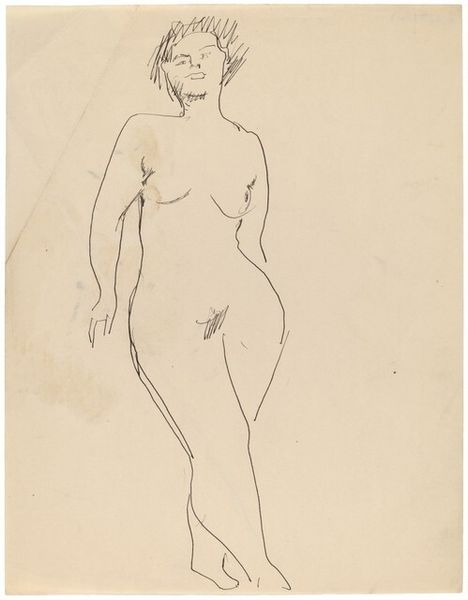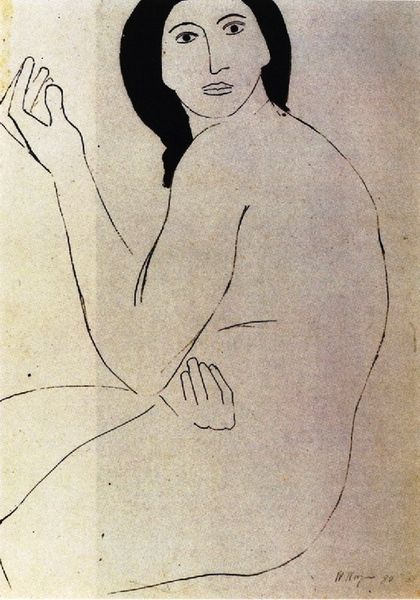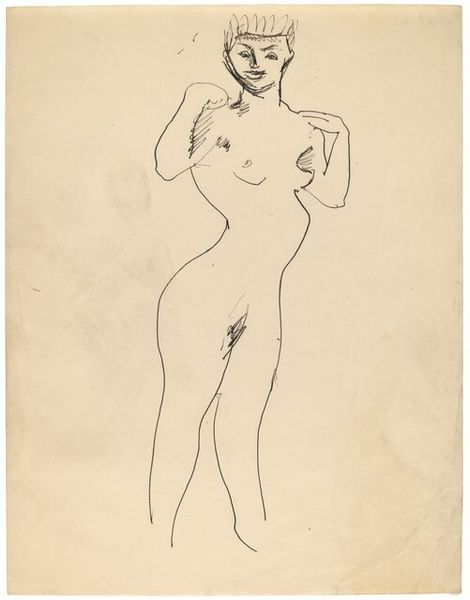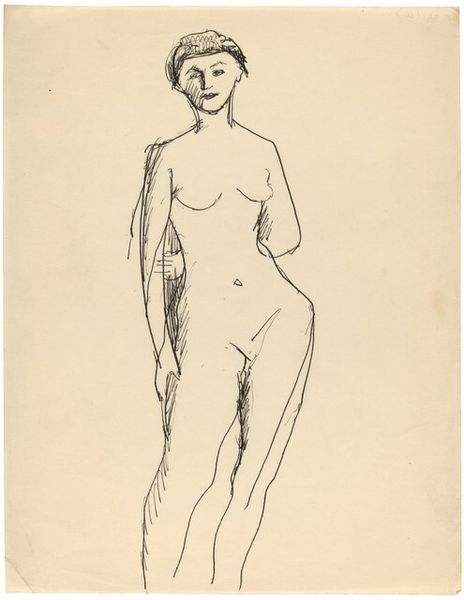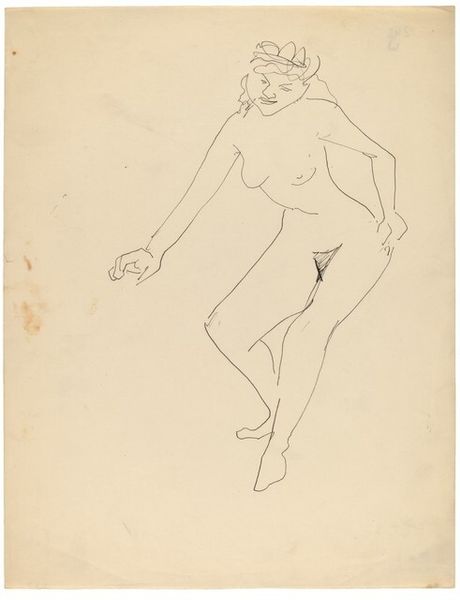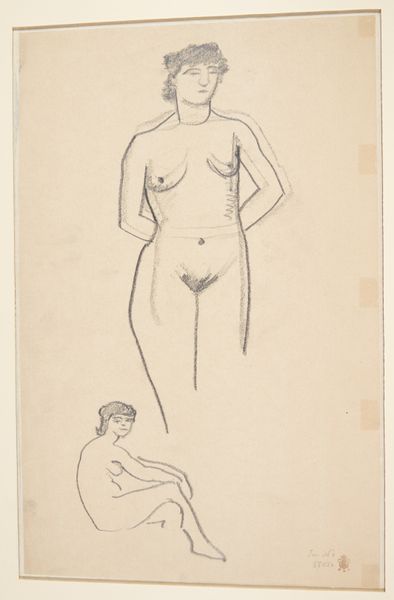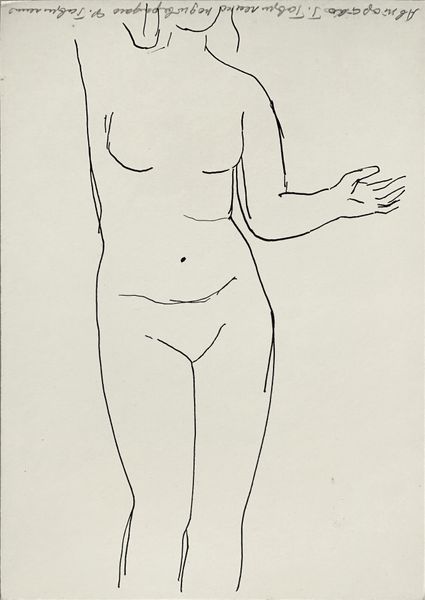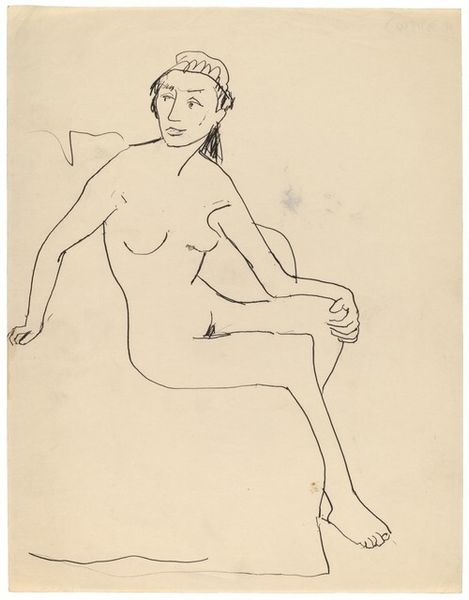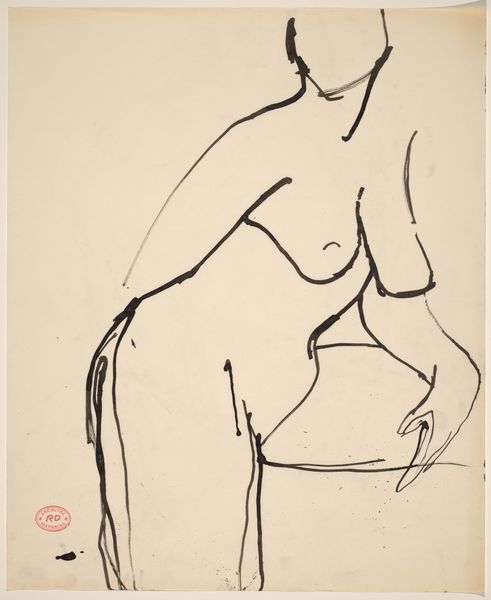
drawing, pencil
#
drawing
#
pencil sketch
#
figuration
#
female-nude
#
pencil
#
expressionism
#
nude
Copyright: Public domain
Editor: This is "Milli" from 1909, a pencil drawing by Ernst Ludwig Kirchner. There's something almost unsettling about this figure. The lines are so stark and direct. What are your thoughts on this piece? Curator: It’s a prime example of Kirchner’s engagement with Expressionism and its societal context. Look at the exaggerated lines, the flattened perspective, the direct gaze of the subject – it rejects academic conventions. How do you think this rejection played out at the time? Editor: I imagine it was quite controversial. It challenges traditional ideals of beauty, and almost feels like an affront to the establishment. Curator: Precisely. Kirchner was part of "Die Brücke," a group that aimed to bridge the gap between traditional art and modern life. They depicted street scenes, portraits, nudes—often with this raw, almost jarring, style. This "rawness" was deliberate. They were after authenticity. This particular figure reflects growing anxieties about social and sexual freedoms at the time. How does that awareness of these historical pressures, do you think, affect how we understand this drawing? Editor: Knowing that definitely adds another layer of complexity. It’s not just about the art itself, but also what it was trying to say about the world around it. Curator: Exactly. "Milli" becomes a testament to the socio-political climate of early 20th-century Germany. Editor: This has definitely changed my initial perception. Thanks for pointing out those crucial socio-historical aspects!
Comments
No comments
Be the first to comment and join the conversation on the ultimate creative platform.

